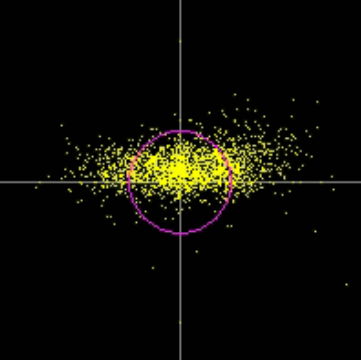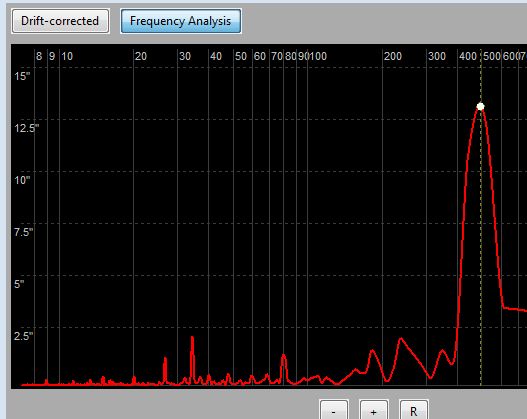CGX - frequent elongated stars in RA, 2" vs DEC 0.5"
Stewart Tansley
Celestron CGX, currently carrying Celestron EdgeHD 8 reduced 0.7x, OAG, ASI174MM-mini guide cam. 1488mm f/l, 5.86um pixels, 0.81 arc-sec/px.
I’m sure I have a few things going on (cables, polar alignment, maybe balance – all being refined), but I continue to have consistent substantially elongated stars in RA on ~30-50% of my 60-sec subs. RMS shows ~1.5-2” in RA, cf. ~0.5” DEC.
The scatter plot below summarizes nicely what is going on, but obviously not the cause – random extended movement in RA. It’s like something’s loose?
There’s no significant (in FFT analysis) oscillation, though there are peaks at 34.2s (1”) and 26.7s (0.7”) -- in particular, the worm cycle (~480s) is down at a rather nice 0.1”. The mount has just been Hypertuned (to reduce my variables), but the elongation was happening before that too. So consistent. I always follow the Guiding Assistant recommendations.
Anyone seen something like this and knows a fix?
I will post a properly baselined log if this is not just obvious from the scatter.

bw_msgboard
From: open-phd...@googlegroups.com [mailto:open-phd...@googlegroups.com] On Behalf Of Stewart Tansley
Sent: Saturday, September 11, 2021 1:20 PM
To: Open PHD Guiding
Subject: [open-phd-guiding] CGX - frequent elongated stars in RA, 2" vs DEC 0.5"
You received this message because you are subscribed to the Google Groups "Open PHD Guiding" group.
To unsubscribe from this group and stop receiving emails from it, send an email to open-phd-guidi...@googlegroups.com.
To view this discussion on the web visit https://groups.google.com/d/msgid/open-phd-guiding/8f21fb6f-f498-4207-9617-33dfce18c1e0n%40googlegroups.com.
Stewart Tansley
bw_msgboard


To: Open PHD Guiding
Subject: Re: [open-phd-guiding] CGX - frequent elongated stars in RA, 2" vs DEC 0.5"
